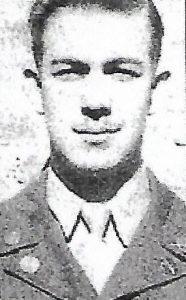Hutton, Louie E.
Army Private 1st class
Louie E. Hutton, age 19, from Oklahoma, Tulsa county.
Service era: Korea
Date of death: July 26, 1951
Death details: On May 25, 1951, elements of the 187th Regimental Combat Team (RCT) were assigned to secure a bridgehead on the Soyang River in South Korea. The RCT, bolstered by two companies of tanks, launched a counter-attack against Chinese Communist Forces (CCF) that had taken control of the river’s northern shore. Despite fierce enemy resistance, the 187th RCT successfully dislodged the CCF, and then began a cautious push northward in an attempt to locate and destroy other enemy forces. The 187th RCT was still engaged with CCF troops by the end of the day, and suffered several casualties over the course of the fighting.
Corporal Louie Ellihue Hutton joined the U.S. Army from Oklahoma and was a member of the Service Company, 187th RCT. He took part in the fighting on May 25, and was captured by the enemy at some point during the battles that day. He joined a group of prisoners who were marched north into North Korean territory. Around July 26, 1951, near the Suan Mining Camp, CPL Hutton became too weak to continue, and his captors ordered he be left behind. No prisoners of war reported seeing CPL Hutton after this point, and he is thought to have died a few days after being left. His remains have not been recovered, and he was not identified among remains returned to U.S. custody after the war. Today, Corporal Hutton is memorialized on the Courts of the Missing at the National Memorial Cemetery of the Pacific.
Source: National Archives, Defense POW/MIA Accounting Agency
